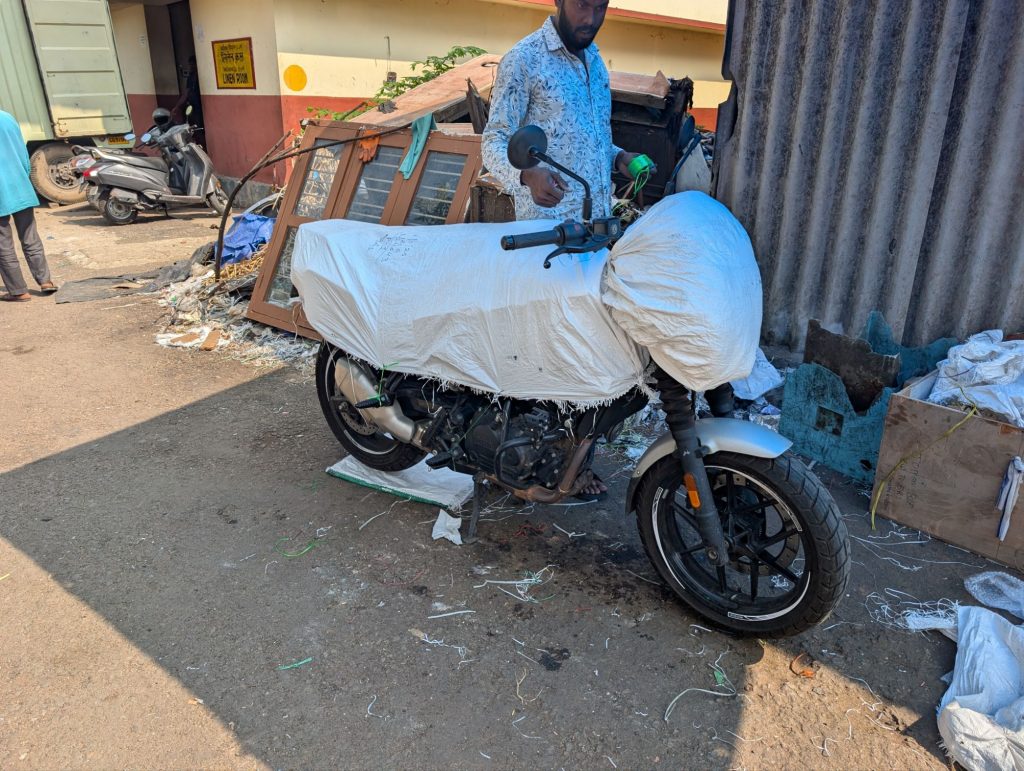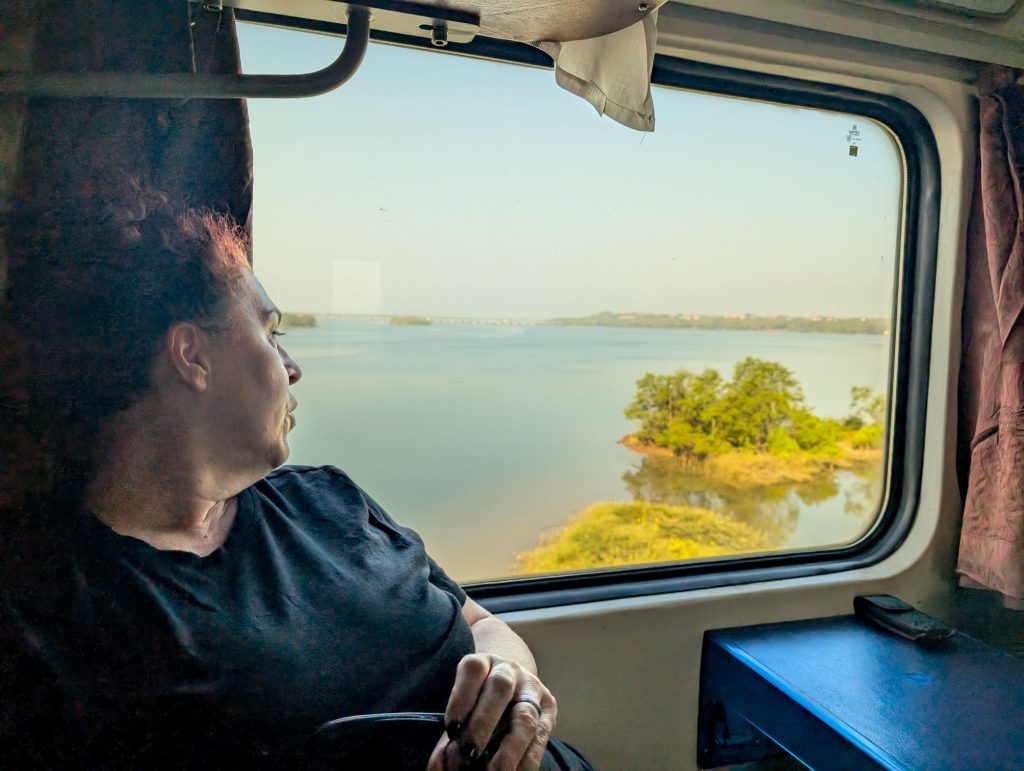From Kochi to Mumbai: Bureaucracy, Bumpy Rides, and the Longest Train Journey
Leaving Kochi was bittersweet. Even with the somewhat ordinary hotel, we liked it there. But it was time to move on. But first, there was the small matter of shipping our motorcycles to Mumbai—a process that, unsurprisingly, involved Indian bureaucracy at its finest.
We started by checking into a hotel nearer the train station, a practical decision to simplify the logistics. The next morning, we made our final ride through Kochi’s bustling streets to the parcel office. It wasn’t a particularly memorable ride for Dalma, who was ready to be done, but I savored it—it’s hard to say goodbye to a journey like this.
As with all things in India, the process of shipping the bikes required patience. First, we had the bikes wrapped—a meticulous process that cost just 500 rupees each (about $10 AUD). Then came the paperwork: signatures, stamps, and a visit to the police officer on duty. Standing in line took hours, but eventually, we got it sorted. The cost to ship both bikes to Mumbai? Just 5,000 rupees (around $100 AUD). For all the hassle, the price was surprisingly reasonable.

That evening, we packed our bags—more awkward without the bikes to carry them—and made our way to the train station. Navigating the platforms was an adventure in itself. We went to the wrong platform, but after some confusion and a few wrong turns, we finally found the right platform and settled into our first-class carriage.
First impressions? Well, they weren’t great. I’d read about the upgrades to Indian Railways, but this carriage seemingly wasn’t one of them. It was clean enough but felt like a relic of another era. Dalma compared it to trains in 1980s Romania, though with fewer amenities.

Still, it kept the rain off and gave us some privacy. We were in a two-berth coupe, not sharing in a four-berth cabin. The beds were hard but serviceable, the air conditioning worked, and attendants brought food around regularly. For 22 hours, we sat (and occasionally slept) as the Indian countryside rolled by. It was oddly peaceful, though the monotony was occasionally broken by surprises—like the carriage supervisor demanding a hefty 500-rupee tip, followed by the cleaner’s less successful attempt to shake us down.
We pulled into Mumbai late at night, tired and swaying from 22 hours of train rocking. At the station, we handed the bike keys and shipping receipt to a man who would take care of retrieving them for us—a small relief after the long journey. Then, it was into an Uber for the final stretch to our accommodation.
The drive to the serviced apartment we’d booked was a hectic hour and a half, filled with the fast, chaotic energy of Mumbai traffic. By the time we arrived, we were utterly drained, our heads still swaying from the train and our nerves frayed from the ride.
First impressions of Mumbai? Not great. Exhaustion magnified everything—the dirt, the noise, even the condition of the apartment, which felt cramped and unkempt. The proximity to a nearby slum didn’t help either. It’s a lesson I’ve learned before: never trust your judgment when you’re bone-tired.
The next day, after a good night’s sleep, Mumbai felt different. The same streets that had seemed overwhelming the night before now hummed with life and possibility. The apartment, while basic, was tolerable. Even the slum next door became part of the city’s fabric rather than an eyesore.
Mumbai is a city that defies first impressions. It’s chaotic, sure, but it’s also vibrant and endlessly fascinating. We’ve been here a couple of days now, soaking in its energy, reflecting on the journey that brought us here, and preparing for what’s next.
This trip has been a mix of beauty and challenges, chaos and calm—and Mumbai is the perfect place to rest,. For now, at least.